Fish on the Grill
For the uninitiated, cooking fish on the grill can be a daunting and intimidating process. Aside from perfectly smoking a large roast or perfectly toasting some bread, grilling fish can be one of the trickiest things to pull off on your backyard barbecue. Fish does an incredibly good job of sticking to the grill and also tends to be very fragile. Combine these two traits and you’ve got a piece of meat that’s not only prone to sticking, but one that shreds apart as you hack away with your spatula. Things don’t have to go this way the next time you get a craving for some grilled salmon or halibut, and to ensure they don’t, we’ve come up with a few tips to keep your fish where it belongs: perfectly cooked and on your dinner plate.
Step 1 – Clean and oil the grates
Clean and well-lubricated grill grates represent one of the golden rules of grilling, no matter what you’re cooking. This rule is especially important for fish; not only to keep it from sticking, but also to create a perfectly seared crust. Give your grates a thorough brushing, then swab them with a high temperature cooking oil like safflower, sunflower, or grapeseed oil. After seasoning your fish, be sure to brush it lightly with oil as well to further prevent sticking and to promote better searing.
Step 2 – A hot, hot fire
One of the most important components in grilling the perfect piece of fish is a piping hot fire. Whether you’re grilling with gas or coal, preheating your grill to its absolute hottest temperature is the best way to avoid sticking. Years of grilling salmon on a wood-fired grill taught me one very valuable lesson: throw a piece of fish on an under-heated grill grate and it’s guaranteed to stick.
So how hot is hot enough? You should only be able to hold your hand over the grate for a few seconds. Any longer than that and your grill isn’t hot enough. Most gas grills won’t get hotter than 550-600° F, so turn at least half the burners on high and preheat at least 15 minutes. Also, just like you would with other meats, try to keep your fish out of direct flame. If you’re using a gas grill, the flame tamers will do a pretty good job of doing this for you – just be weary of fattier cuts of fish as they still have the potential to flare up. If you’re using a charcoal grill, be sure not to put your fish on any part of the grate that has flames actually rising up through it. While you want your grill super-hot, putting a piece of fish into direct flame will cover it in creosote, which can taste less than appetizing.
Step 3 – Think like the Beatles and “Let it Be”
It’s always a good idea to keep a close eye on what you’re cooking, especially seafood, but with fish there’s a small exception to the rule. Once you place your fish on the grill, let it be. Resist the urge to pick up your fish too early. In the first few moments after placing a piece of fish on the grill, some interesting things happen. If you pick up the fish immediately after putting it down, you probably won’t have any problem doing so. However, after the first 20 seconds or so the fish will glue itself onto the grates. Don’t fret, because as soon as the fish has properly seared (approximately 1-2 minutes) it will release and you’ll be able to turn or move it as you please.
Whole Fish vs. Filet
Depending on what species of fish you buy, grilling whole fish usually takes a bit longer than cooking a simple filet. In Step 2, we talked about having your fire blazing hot, which is perfect for fish filets. Whole fish, however, require lower heat for a longer amount of time. The general rule for whole fish is 8-10 minutes per inch (fish length). With large, whole fish it’s also a great idea to use an instant read thermometer. Your fish is cooked when the internal temperature reads 130-135°F. Because whole fish can be quite large and cumbersome to handle, it’s a great idea to use a fish basket or non-stick grill grid.
Tools, Gadgets, and Secret Weapons
Some of the most practical, convenient, and save-the-day tools currently on the grill market are, you guessed it, fish grilling tools. Since fish can be finicky, fragile, and downright frustrating to cook, it’s a great idea to consider purchasing some tools to help you work smarter instead of harder. Let’s take a look at just a few of the solutions available for cooking your next catch:
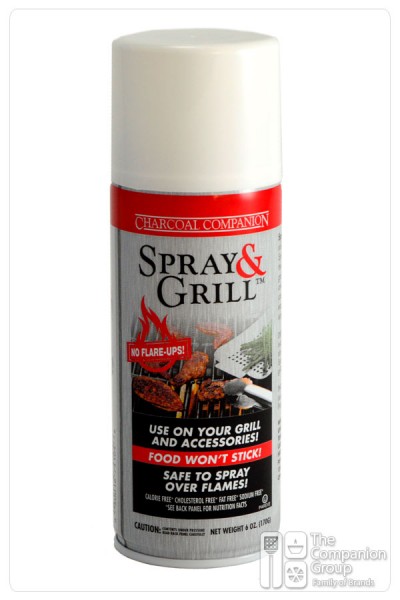 Spray & Grill™ Non Stick Grill Spray – This spray is perfect for keeping any filet from sticking to your grill grates. Specially formulated to be used on a hot grill (without flaring up), this spray is a life-saver when it comes to cooking fish.
Spray & Grill™ Non Stick Grill Spray – This spray is perfect for keeping any filet from sticking to your grill grates. Specially formulated to be used on a hot grill (without flaring up), this spray is a life-saver when it comes to cooking fish.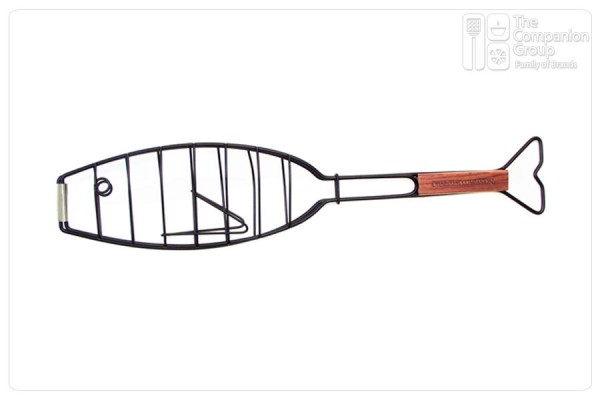 Fish Baskets – Grill baskets are designed for a variety of foods, and in this case we’re talking about baskets used to cook whole fish. Simply open up the basket, load your whole trout, bass, or salmon and place the basket on the grill. Moving your fish becomes as easy as picking up a handle – no sticking, scraping, or cursing involved!
Fish Baskets – Grill baskets are designed for a variety of foods, and in this case we’re talking about baskets used to cook whole fish. Simply open up the basket, load your whole trout, bass, or salmon and place the basket on the grill. Moving your fish becomes as easy as picking up a handle – no sticking, scraping, or cursing involved!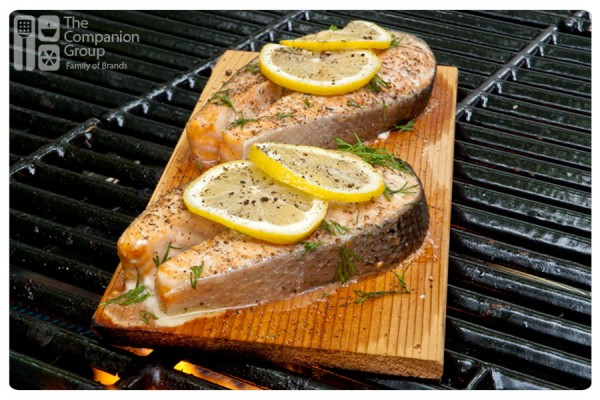 Wood Planks – Not only is planking a convenient way to cook fish, but it also imparts flavor. Soak a plank of your favorite flavor, load up your favorite cut of fish and place it on the grill. As the plank is exposed to the heat of the grill, your fish will be infused with wonderful wood tones that complement its natural flavor.
Wood Planks – Not only is planking a convenient way to cook fish, but it also imparts flavor. Soak a plank of your favorite flavor, load up your favorite cut of fish and place it on the grill. As the plank is exposed to the heat of the grill, your fish will be infused with wonderful wood tones that complement its natural flavor.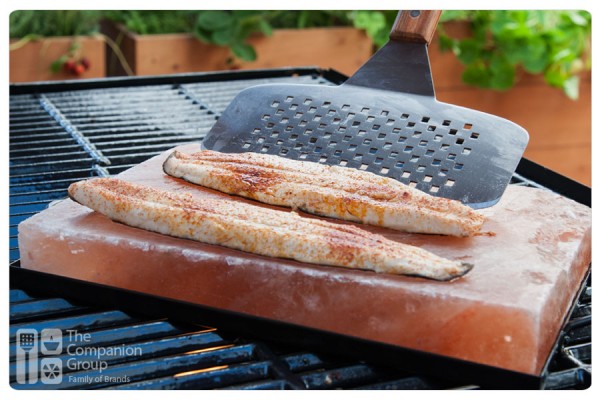 Fish Spatulas – Since fish often comes in a unique shape (typically longer or wider than other proteins) it helps to have a spatula suited for the task. These spatulas are designed with extra width allowing you to fully support a long, fragile piece of fish.
Fish Spatulas – Since fish often comes in a unique shape (typically longer or wider than other proteins) it helps to have a spatula suited for the task. These spatulas are designed with extra width allowing you to fully support a long, fragile piece of fish.
Armed with the know-how (and maybe a few handy new tools) anyone can successfully grill fish. So head to the grocery store, or dust off the old fishing pole, and get to grilling your next great catch. Who knows, before long you might just go from Aficionado to A-FISH-ionado!

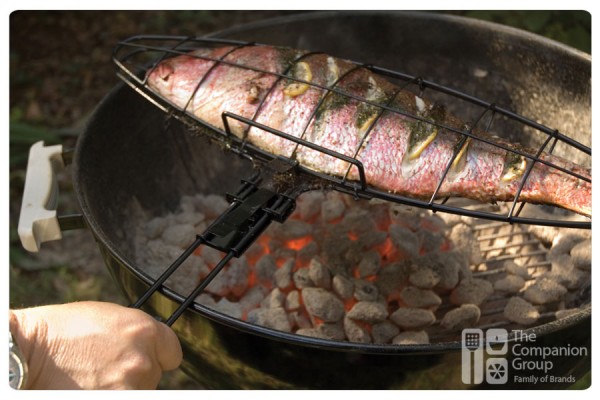




No comments yet.